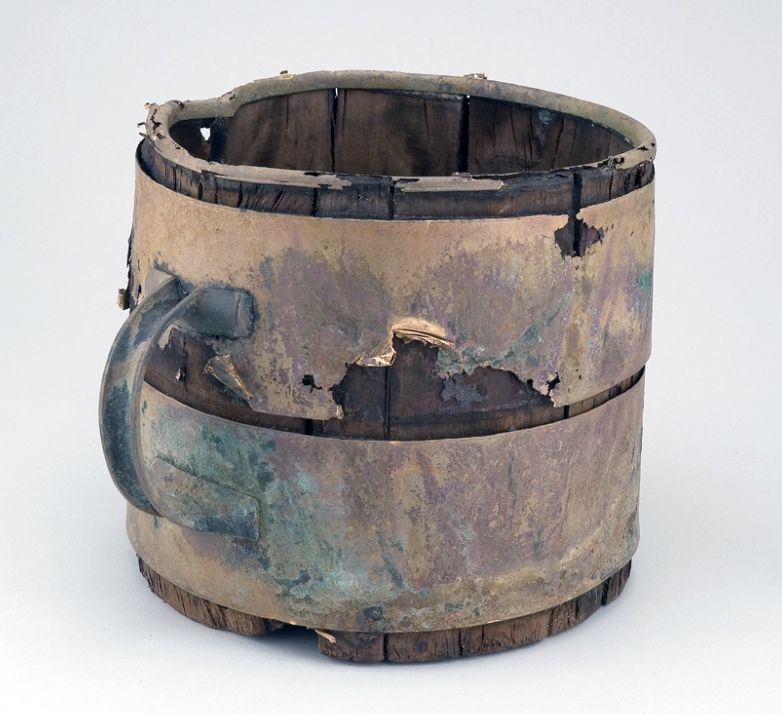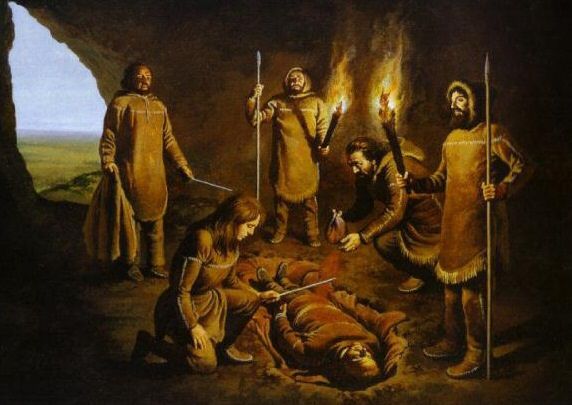Wonders of Wales
, 1 June 2016
Treasures: Adventure in Archaeology has several amazing Welsh finds on display like the Cwm Nant Col Hoard, the Dolgellau Chalice and Paten and the Sully Hoard. These objects are only a small part of the collection that the National Museum Wales holds.
Capel Garmon Firedog
In the Iron Age, the hearth was the centre of the home. Many hearths of high status families would have been decorated with large iron stands called firedogs. They were often highly designed, most likely to reflect the status of its owner. In 1852, a firedog was discovered near Llanrwst, Conwy. Each end was topped off with what looked like a mythical animal, a combination of ox and horse. Analysis of the object shows that it was made up of 85 different pieces and would have taken several years to construct. When it was discovered, it had been buried in a boggy area and was in one piece, which led archaeologists to believe that it may have been buried as a ritual offering to the gods. It was not uncommon for people to put offerings into lakes or bury them in boglands during this period.

Capel Garmon Fire Dog
Langstone Tankard
While people of the past left many objects behind, they don't always survive for us to rediscover. This is especially true for objects made out of organic material like wood. However, if the conditions are just right, usually buried in a water-logged and oxygen-free environment, objects can survive. That’s the case for a handful of wooden tankards dating back to the Late Iron Age or Early Roman Period. By examining these objects, we are given clues to their use and greater insight to the society who made them. The Langstone Tankard held about four pints. It’s unlikely that was a single serving so the tankard may have been passed around, perhaps during a ritual. One of the most interesting things about the tankard is that it was made out of yew wood. Yew wood is toxic and, with enough exposure, fatal and according to Roman writings from this time period the toxicity was well known. However, as with several other plants, in small doses it has been linked to medicinal uses. It could be that the tankard was used with those medicinal uses in mind.

Langstone tankard
Caergwrle Bowl
One of the most impressive objects has to be the Caergwrle Bowl. Dating back to the Bronze Age and about 3,200 years old, the bowl is made up of shale, tin and gold. This was the same time period when the Trojan War was being fought in modern-day Turkey. It was found in 1823 when workmen were digging drainage ditches at Caergwrle Castle in Denbighshire. The bowl was in pieces but has since been restored. Designs were carved into the bowl and then the gold was added. It is thought that the bowl itself was made to represent a boat and the wave pattern on the bottom certainly furthers that. There are also shields and oars and even a pair of oculus. If you have ever seen a drawing of an Ancient Greek or Roman boat (especially the triremes) you will have seen that most of them are decorated with oculi, which were thought to ward off bad luck. While the Bronze Age people of Britain would have used boats for trading, there has not been a lot of evidence found.

Caergwrle Bowl
Paviland Cave
During the height of the last Ice Age (22,000 to 10,000 BC) the majority of the British Isles were covered by glaciers but we do find evidence of human activity in a few places. The caves that line the shore of the Gower Peninsula have provided information on some of the earliest people to arrive to Wales. In 1823, the Red Lady of Paviland was discovered. This burial was accompanied by beads, tools and rings and the bones were stained with red ochre. The analysis showed that the Red Lady was in fact a male in his mid-twenties who died around 27,000 BC making it one of the oldest formal burials in Western Europe.

Illustration of the Red Lady of Paviland burial